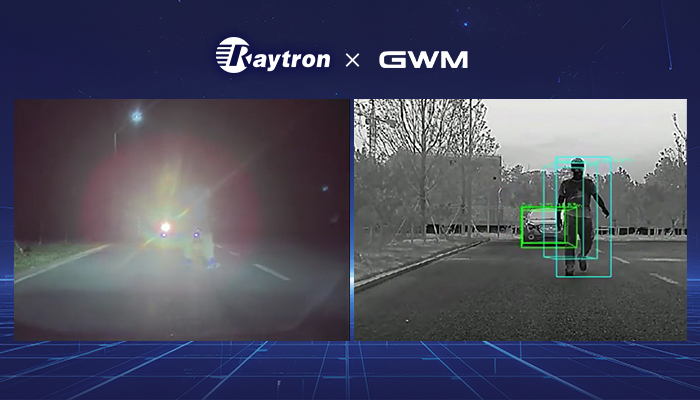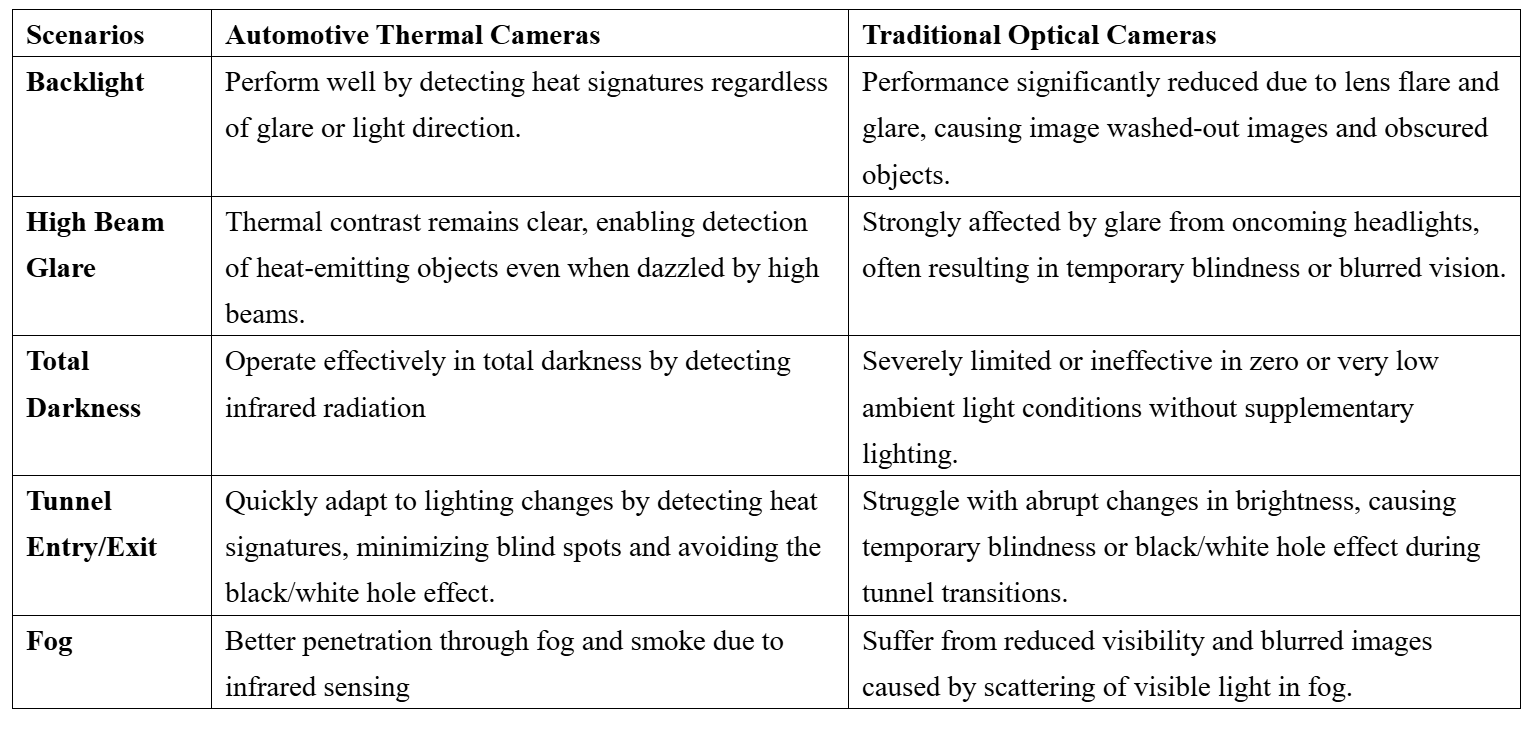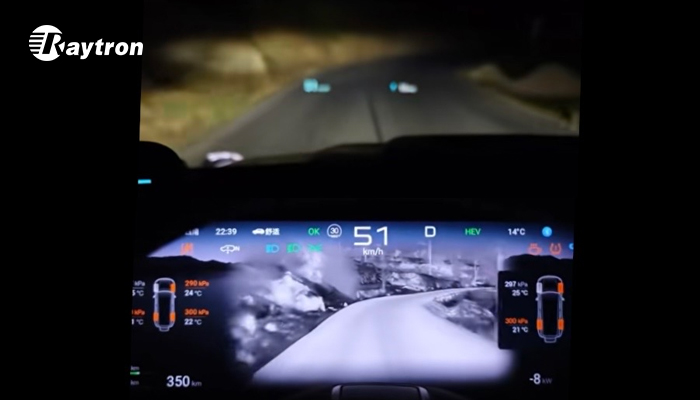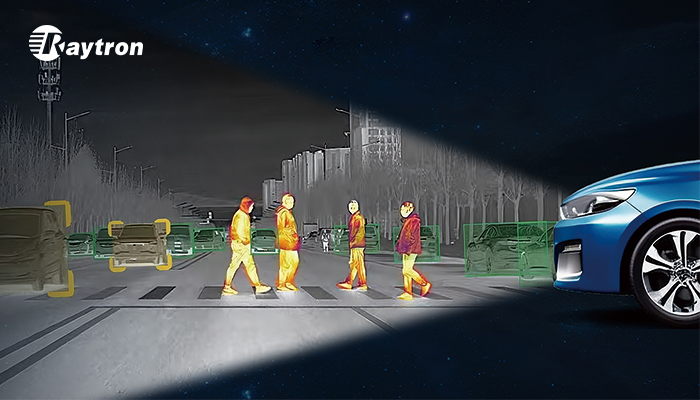Imagine driving on a highway at night or navigating a pitch-dark rural lane, how do you avoid collisions when visibility is near-zero? Unlike traditional optical cameras, a thermal night vision camera works independently of ambient light, enabling reliable pedestrian detection, wildlife spotting, pothole recognition, and road hazard detection. Raytron’s automotive thermal cameras—engineered for advanced driver assistance systems (ADAS)—can identify heat sources up to 300 meters away, delivering real-time, high-definition thermal maps with no latency. At Gasgoo’s 2025 Automotive Smart Glass Conference, Great Wall Motor (GWM) announced the adoption of Raytron’s advanced thermal imaging technology to enhance nighttime driving safety across its upcoming models.

Automotive Thermal Cameras vs. Traditional Optical Cameras

How Thermal Imaging Improves Nighttime Driving Safety
With new safety standards such as Euro NCAP, C-NCAP and FMVSS 127 mandating nighttime c testing, leading OEMs are increasingly turning to thermal imaging to ensure nighttime driving safety. The competitive advantages of thermal imaging lie in:
lRobust Performance in Challenging Lighting Conditions
Maintains reliable imaging even in glare, smoke, and darkness and other adverse scenarios.
lExcellent Penetration and Long-Range Detection
Effectively cuts through smoke, haze, and obstacles, extending visibility well beyond traditional headlights. While conventional headlights cover only 100-150 meters, Raytron’s automotive thermal cameras detect heat sources up to 300 meters away.
lIntelligent Obstacle Recognition
Raytron’s AI-powered thermal cameras distinguish living beings from cooler surroundings, triggering the AEB system when pedestrians or animals rush to the road.

The Four Generations of Automotive Thermal Imaging
At the Conference, the chief engineer at GMW introduced the advancement of thermal imaging technology, with Raytron at the front of this evolution.
l1.0 Passive Display
High-resolution uncooled VOx detectors combined with image enhancement algorithms deliver clear thermal images to drivers.
l2.0 Active Perception
Lightweight AI algorithms enable real-time detection and tracking of vehicles, pedestrians, and riders, feeding critical data to ADAS for preemptive obstacle avoidance.
l3.0 Intelligent Upgrade
Advanced algorithms support long-range micro-targets detection, with fine-grained rendering that enhances visual clarity in complex lighting. The integration of shutterless NUC ensures continuous, real-time sensing, crucial for uninterrupted ADAS performance.
l4.0 Multi-Sensor Fusion
Deep integration of infrared sensors with visible cameras, millimeter-wave radar, and LiDAR enables uninterrupted perception in adverse environments, helping increase assisted driving safety and reliability.

Driving Toward a Safer Tomorrow
Raytron’s automotive thermal imaging is set to be integrated into multiple GWM models, with mass production scheduled for imminent rollout. As adoption in smart driving and advanced driver assistance systems accelerates, thermal imaging is becoming a key enabler of 24/7, all-scenario driving safety, helping drivers navigate safely through darkness, fog, glare, and other challenging conditions.